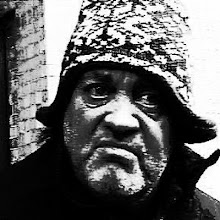Given I want to make a copy of a 70s, Georgia Jacob lampshade, I need a large, silicone mat on which to place the cloth I'm going to cover in resin. None of the craft mats you can get on e-Bay are anywhere near large enough to accommodate a flat, 90cm sided square, so I ordered some cut to size silicone mat (1m x 1.2m), which arrived on Tuesday. OK, it was £45, but I can reuse it for lots of lampshades and other projects.
I chose some leopard print cotton to use for the shade, which will provide a nice, illuminated pattern. Hay's going away with her dad and his partner on Monday to Dunster for several days, so I might (unbeknownst to her) utilise the kitchen island for the manufacturing process. Shhhh!
No need to worry about fire retardant capabilities as I'm using an LED array under the shade that doesn't generate any heat.
Oh, and I'm moving into full-scale production with the resin 12 bore cartridge coasters.
On the last production run, I poured a thin layer of resin on the bottom of the molds before placing the cartridge ferrels into them, which should provide a nice, smooth base to the coasters and no holes.
I also used my blowtorch on the surface of the resin to get rid of any bubbles - and they popped like magic. You obviously have to be careful not to melt the molds.
Also made a couple of hearts with black centred ferrels fully sunk into them - I particularly like these ferrels and would like to use them for coasters, but I don't have enough.
I've ordered some sticky-backed, black baize to put on the underside, which will both hide any imperfections and offset the brass cartridge ferrels. I have some black felt, but am loath to use spray glue or PVA, as the cloth difficult to cut properly due to it's propensity to slide around and stretch at the slightest pressure. It shows the effect I want to achieve though.
I could experiment with colouring the resin black, or doing a very thin layer of black, waiting for that the cure and then putting the ferrels on the black layer and topping off with clear resin; however, I'd need deeper molds.
I'm really enjoying the experimentation. Hay thinks I should sell them but, for the price they could fetch, it's hardly worth my time. There again, the time element is sunk, as I have most afternoons off with bugger all else to do, so it would just necessitate covering my materials costs and adding a little on top of that. Mass produced coasters got for anywhere between £12 and £18. Even a tenner would be good for a set of unique, hand crafted shotgun ferrel coasters.








No comments:
Post a Comment